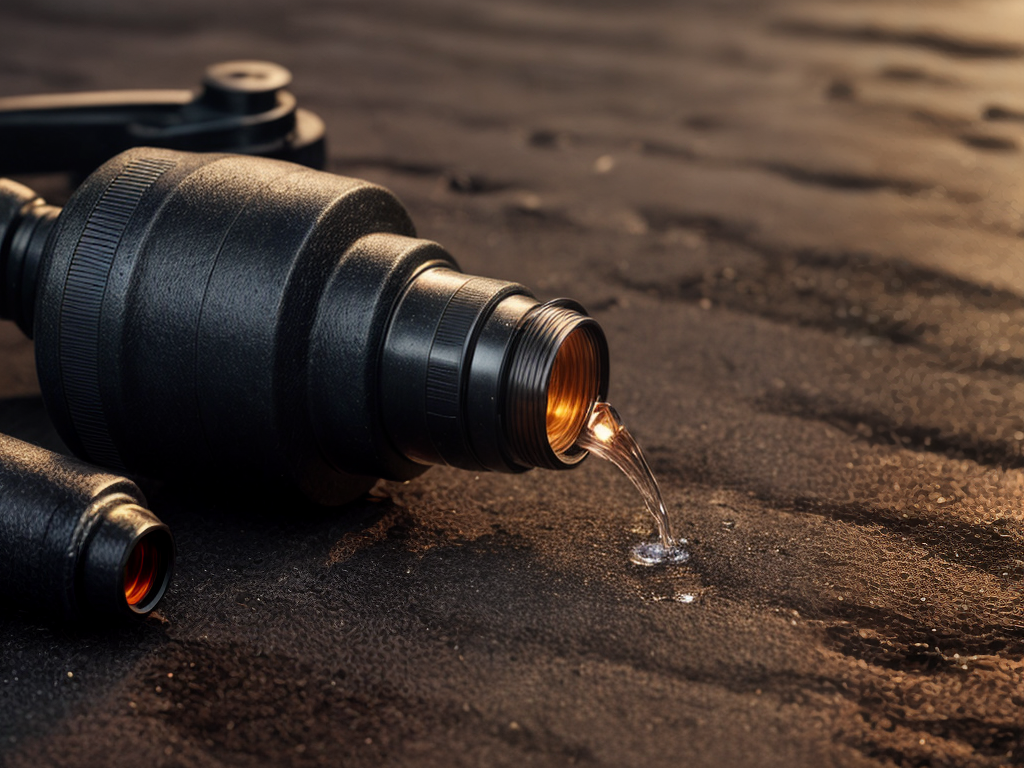
As someone who has worked extensively with valve systems, I can attest to the importance of detecting and fixing leaks promptly. Did you know that even a small leak in a valve system can result in significant energy loss, with up to 20% of compressed air being wasted? In this discussion, we will explore the techniques and tools necessary to identify and repair leaks in your valve system. From understanding the signs of leaks to step-by-step guides for locating and fixing them, we will cover it all. So, if you want to save energy and optimize the performance of your valve system, let’s dive into the world of leak detection and repair.
Understanding the Signs of Valve System Leaks
To effectively detect and address leaks in valve systems, it is crucial to have a comprehensive understanding of the signs that indicate a potential leak. Valve system leak prevention starts with being able to identify the warning signs early on. One of the most common signs of a leak is a drop in system pressure. If you notice a sudden decrease in pressure, it could be an indication that there is a leak somewhere in the system. Another sign to look out for is an increase in fluid consumption. If you find that you are refilling your fluid more frequently than usual, it may be a sign that there is a leak in the valve system. Additionally, leaks can often be identified by inspecting the valve seals and connections. Look for any signs of corrosion or damage, as these can be indicators of leaks. Troubleshooting valve system leaks involves conducting regular inspections and tests to identify any potential issues. This includes checking for any unusual sounds, such as hissing or whistling, which can indicate a leak. It is also important to monitor for any visible signs of leaks, such as puddles or wet spots around the valves. By understanding and recognizing these signs, you can take proactive measures to address valve system leaks and prevent any further damage or loss of fluid.
Tools and Equipment Needed for Leak Detection
One essential aspect of detecting and addressing leaks in valve systems is having the necessary tools and equipment. As a technician, I rely on a specific set of tools to effectively identify and fix leaks. Here are three essential tools that every technician should have in their arsenal:
-
Pressure gauges: These gauges are used to measure the pressure within the valve system. By monitoring the pressure levels, I can determine if there is a leak present. If the pressure drops unexpectedly, it indicates a leak that needs to be addressed.
-
Leak detection solution: This solution is applied to the valve system, allowing me to visually identify leaks. The solution is designed to bubble or change color when it comes into contact with a leak. This makes it easier for me to locate the source of the problem and take appropriate action.
-
Ultrasonic leak detectors: These devices are used to detect high-frequency sounds that are emitted by leaking gas or liquid. By using an ultrasonic leak detector, I can pinpoint the exact location of the leak, even if it is not visible to the naked eye. This allows for precise and efficient repairs.
With these tools at my disposal, I can confidently carry out leak detection methods and troubleshooting techniques to identify and fix leaks in valve systems. By ensuring that I have the right equipment, I am able to provide effective solutions and maintain the freedom of a well-functioning valve system.
Step-by-Step Guide to Locating the Leak
To successfully locate a leak in a valve system, there are three key methods that can be utilized: visual inspection, pressure testing, and the use of leak detection solutions. Visual inspection involves examining the system for any visible signs of leakage, such as wet spots or dripping. Pressure testing involves pressurizing the system and observing if there are any drops in pressure, which could indicate a leak. Lastly, leak detection solutions can be applied to the system, and if there is a leak, the solution will produce bubbles or a change in color, allowing for easy identification.
Visual Inspection for Leaks
Using a flashlight and a magnifying glass, carefully inspect the valve system for any signs of leaks. Visual inspection is a crucial step in understanding leak detection and ensuring timely repairs. Here’s a step-by-step guide to help you locate the leak:
-
Look for any visible signs of moisture or drips around the valve connections. Pay close attention to the areas where pipes meet the valves.
-
Check for discoloration or corrosion on the valve body or surrounding pipes. These can indicate a leak or potential problem.
-
Examine the valve seals and gaskets for any signs of wear, cracks, or damage. Faulty seals can lead to leaks and should be replaced promptly.
Pressure Testing for Leaks
To accurately locate the leak in a valve system, the next step is to conduct a pressure test. This technique is essential for identifying any leaks that may not be visible during a visual inspection. Pressure testing involves pressurizing the system with a gas or liquid to determine if there are any leaks present. By doing so, you can pinpoint the exact location of the leak and take appropriate measures to fix it. Regular maintenance, including periodic pressure testing, is crucial for ensuring the integrity of your valve system. It helps to prevent costly repairs and potential safety hazards. By following proper pressure testing techniques and conducting regular maintenance, you can maintain the efficiency and reliability of your valve system.
| Pressure Testing Techniques | Importance of Regular Maintenance |
|---|---|
| Conduct a pressure test | Prevent costly repairs |
| Use gas or liquid | Ensure system integrity |
| Identify leak location | Avoid potential safety hazards |
| Take appropriate measures | Maintain system efficiency |
Using Leak Detection Solutions
I highly recommend utilizing leak detection solutions to efficiently locate the leak in your valve system. These solutions offer several benefits, including early leak detection, which can save you time and money in the long run. Here are three leak detection techniques that can help you in your quest for a leak-free valve system:
-
Visual Inspection: This involves inspecting the valve system for any visible signs of leaks, such as puddles or damp spots. It is a quick and easy way to identify leaks, especially in visible areas.
-
Pressure Testing: By pressurizing the valve system and monitoring the pressure drop, you can determine if there is a leak. This technique is effective in detecting small leaks that may not be visible to the naked eye.
-
Ultrasonic Testing: This method uses ultrasonic technology to detect leaks by listening for the sound of escaping gas or liquid. It is highly accurate and can pinpoint the exact location of the leak.
Repairing Minor Valve System Leaks
For effective and efficient repair of minor valve system leaks, it is imperative to identify the specific location of the leak using a systematic approach. Troubleshooting valve system leaks requires a methodical process to pinpoint the problem area accurately. Once the location is determined, you can proceed with the necessary repairs.
First, shut off the valve and relieve any pressure in the system to ensure your safety. Then, inspect the valve and surrounding components for any visible signs of damage or wear. Look for cracks, corrosion, or loose connections that could be causing the leak. It’s essential to pay attention to even the smallest details, as minor issues can escalate into more significant problems if left unaddressed.
If the leak is coming from a valve seal or gasket, replacing it is a straightforward fix. Carefully remove the old seal or gasket and install a new one that is compatible with your valve system. Make sure to tighten the connections properly to prevent future leaks.
In some cases, the leak may be due to a faulty valve stem or spindle. This can be repaired by replacing the damaged stem or spindle with a new one. Use the appropriate tools to remove the old component and install the replacement securely.
Remember to test the repaired valve system thoroughly before resuming normal operations. Turn on the valve and check for any signs of leakage. If the problem persists, it may be necessary to seek professional assistance.
Addressing Major Leaks and Ruptures
Major leaks and ruptures in valve systems require immediate attention to prevent further damage and ensure the safety of the surrounding environment. When faced with such emergencies, it is crucial to act swiftly and effectively. Here are three key steps to address major leaks and ruptures in valve systems:
-
Isolate the affected area: The first step in addressing a major leak or rupture is to isolate the affected area. This involves shutting off the flow of fluid to the damaged section of the valve system. By doing so, you can prevent the leak from spreading and causing more extensive damage. This also helps to minimize the risk of environmental contamination.
-
Engage in rupture prevention: Once the affected area is isolated, it is important to take steps to prevent further ruptures or leaks. This may involve reinforcing weak or damaged sections of the valve system, installing additional safety mechanisms, or even replacing faulty components. By proactively addressing potential weak points in the system, you can reduce the likelihood of future emergencies.
-
Perform emergency valve repairs: After the immediate threat has been contained, it is essential to perform emergency valve repairs as soon as possible. This may involve replacing damaged valves, repairing leaks, or conducting a thorough inspection of the entire valve system. By promptly addressing the root cause of the major leak or rupture, you can restore the system to its optimal functioning state and minimize the risk of future incidents.
Preventing Future Leaks in Your Valve System
To prevent future leaks in your valve system, it is crucial to implement regular maintenance practices. This includes inspecting valves for signs of wear and tear, checking for loose connections, and ensuring proper lubrication. Common causes of leaks, such as corrosion and excessive pressure, should also be addressed to minimize the risk of future leaks. By following these maintenance tips and regularly inspecting your valve system, you can proactively prevent leaks and maintain the integrity of your system.
Maintenance Tips for Prevention
Regular maintenance is essential in preventing future leaks in your valve system. By following these maintenance techniques, you can ensure the longevity and efficiency of your valves:
-
Inspect Regularly: Conduct routine inspections to identify any signs of wear, corrosion, or damage in your valve system. This will help to detect and address potential issues before they escalate into leaks.
-
Clean and Lubricate: Keep your valves clean and well-lubricated to prevent the buildup of debris or contaminants that can cause leaks. Regular cleaning and lubrication will also ensure smooth operation and extend the lifespan of your valves.
-
Monitor Pressure and Temperature: Stay vigilant in monitoring the pressure and temperature of your valve system. Excessive pressure or temperature fluctuations can lead to leaks, so it is crucial to maintain optimal operating conditions.
Common Causes of Leaks
One of the key factors in preventing future leaks in your valve system is identifying and addressing the root causes of these leaks. By understanding the common causes of leaks, you can implement effective troubleshooting techniques to fix the issues and prevent them from occurring again. Here are some common causes of leaks in valve systems:
| Common Causes | Troubleshooting Techniques |
|---|---|
| Loose fittings | Check and tighten all fittings |
| Damaged seals | Replace worn or damaged seals |
| Corrosion | Clean or replace corroded parts |
| High pressure | Adjust pressure levels within recommended range |
Regular Inspection Techniques
After addressing the common causes of leaks in valve systems, the next step is to implement regular inspection techniques to prevent future leaks. Ensuring a proper inspection frequency is crucial in maintaining the integrity of your valve system. Here are three leak detection methods to consider:
-
Visual inspection: Regularly examine the valves and associated components for any signs of leakage, such as drips, puddles, or discoloration.
-
Pressure testing: Conduct periodic pressure tests to identify any leaks or weaknesses in the system. This involves pressurizing the system and monitoring for any pressure drops.
-
Ultrasonic leak detection: Utilize advanced technology to detect leaks through sound waves. Ultrasonic detectors can identify even the smallest leaks by listening for high-frequency sounds emitted by escaping gases or liquids.


